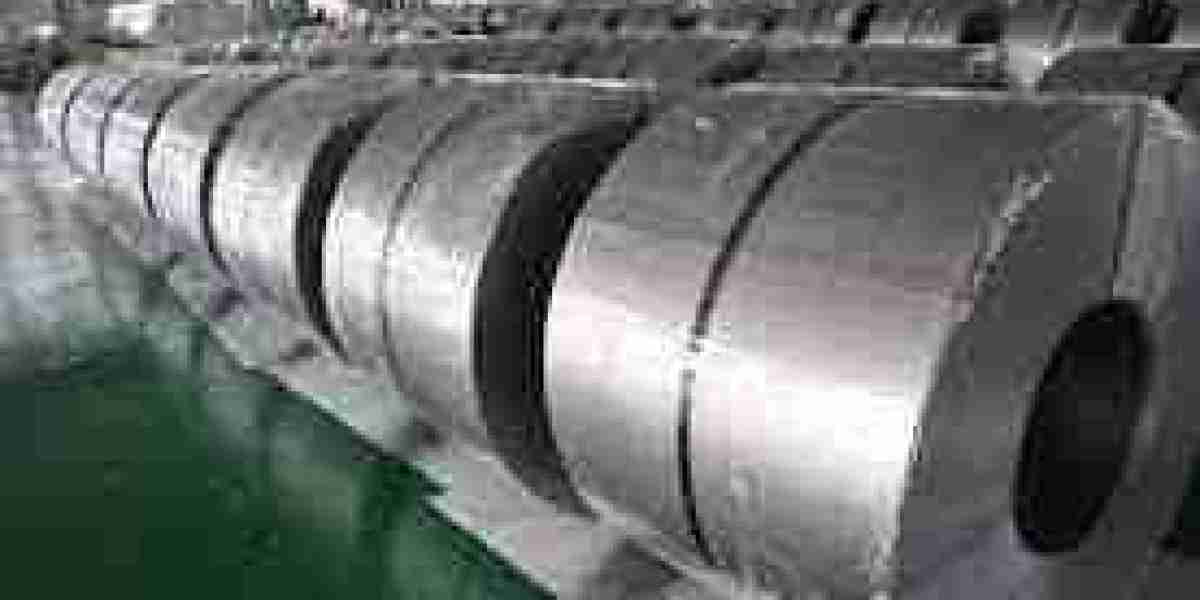The electrical steel market is witnessing rapid advancements, particularly in grain-oriented electrical steel (GOES) grades, which play a crucial role in enhancing the performance of transformers and other core components of energy systems. With the increasing emphasis on energy efficiency and minimizing core losses, these innovations are fueling demand and reshaping production standards across the electrical steel industry.
Grain-oriented electrical steel is a highly refined material designed for use in transformers, where magnetic flux travels in a single preferred direction. This alignment results in significantly reduced energy losses during magnetization and demagnetization cycles, which is essential for efficient power transmission. As global electricity demand grows, driven by expanding grids and rising electrification, the importance of low-loss GOES has never been more critical.
Recent technological progress in GOES production centers around optimizing magnetic properties while minimizing thickness and improving core performance. Advanced manufacturing techniques, such as laser scribing, nitriding, and domain refinement, are now employed to lower specific core losses even further. These developments have resulted in the emergence of ultra-low-loss (ULL) and high-permeability grades that deliver superior magnetic performance while reducing power wastage.
Manufacturers are also investing in upgraded rolling and annealing processes that enhance grain alignment and reduce imperfections that cause eddy current losses. High-precision equipment enables tighter dimensional tolerances and uniform grain orientation, which in turn improves consistency and reliability in transformer applications. These production enhancements are not just about performance—they also cater to growing regulatory demands for eco-efficiency and energy conservation.
The trend toward digitalization and automation in electrical steel manufacturing has also elevated the quality and efficiency of GOES production. AI-driven quality control systems, predictive maintenance technologies, and real-time analytics are being adopted to reduce defects and improve process control. As a result, production yields are improving while overall energy and material consumption per unit of output declines.
From a market perspective, the demand for advanced GOES grades is directly tied to the global push for smarter and more resilient electricity networks. Nations are upgrading their power infrastructure to handle distributed generation, renewable energy integration, and smart grid technologies. Transformers using ultra-efficient GOES are a cornerstone of these modern systems, enabling improved load management and lower energy losses across transmission and distribution lines.
Emerging economies in Asia-Pacific, including India, Vietnam, and Indonesia, are rapidly expanding their electrical infrastructure, offering significant opportunities for GOES manufacturers. At the same time, mature markets such as the U.S., Germany, and Japan are focusing on replacing aging transformers with high-efficiency alternatives that meet modern regulatory standards. In both cases, technological progress in GOES is a key enabler of transition.
The evolution of electric vehicles (EVs) and renewable energy systems also indirectly supports the growth of GOES demand. Step-up transformers at solar and wind farms, as well as those used in EV charging infrastructure, rely on high-grade electrical steel to manage fluctuating power loads efficiently. Manufacturers that can supply advanced GOES tailored to these applications are likely to secure strong market positions.
However, developing these advanced materials is not without its challenges. Producing ultra-low-loss GOES requires highly specialized equipment, significant capital investment, and skilled labor. The barrier to entry for newcomers is high, and even established players must continuously invest in R&D to stay competitive. Supply chain volatility, especially in the sourcing of key alloying elements such as silicon and aluminum, adds complexity to long-term planning and pricing strategies.
Leading market players including Nippon Steel, JFE Steel, Thyssenkrupp, POSCO, and ArcelorMittal are all engaged in R&D to differentiate their GOES offerings. Many are working to improve the recyclability and sustainability profile of their products, aiming to comply with carbon-reduction mandates while offering superior performance. Partnerships with transformer manufacturers and utility providers are also common, enabling co-development of steel grades optimized for specific transformer designs.
Another notable trend is the localization of GOES production. With geopolitical tensions and trade restrictions affecting steel imports in several countries, governments are encouraging domestic manufacturing to secure supply chains. Incentives for setting up regional facilities for electrical steel production, especially GOES, are gaining traction in the U.S., India, and several parts of Europe. This localization could lead to further technological customization based on regional needs.
The road ahead for grain-oriented electrical steel looks strong, with continued innovation acting as a market catalyst. As decarbonization, electrification, and infrastructure modernization initiatives accelerate globally, the demand for highly efficient, environmentally sound transformer materials will remain elevated. Manufacturers that can deliver on both technical excellence and sustainability will be best positioned to thrive in this rapidly evolving landscape.
In conclusion, the electrical steel market is benefiting significantly from technological advancements in grain-oriented grades. These innovations are crucial to building the next generation of efficient and sustainable power systems. As the world leans into electrification and renewable energy, grain-oriented electrical steel will continue to be at the core of progress, energizing infrastructure with precision, efficiency, and purpose.




